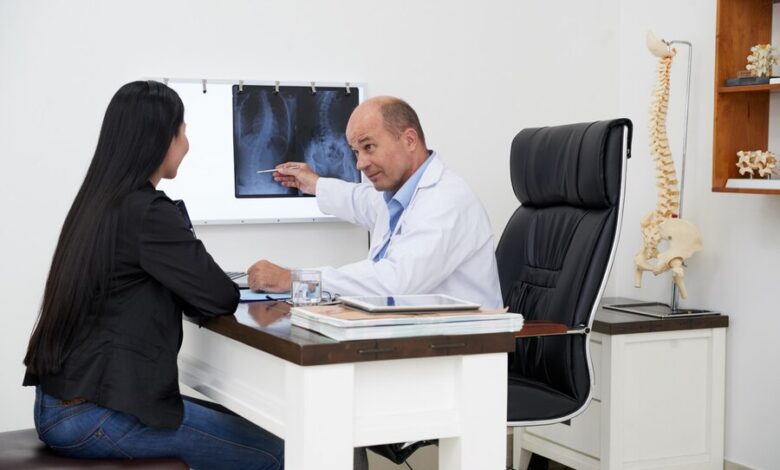Optimizing Pain Medication Strategies for Spinal Cord Injury Patients

Pain is described as “An unpleasant emotional and sensory experience that is linked with potential tissue damage” by the International Association for the Study of Pain (IASP). Following a spinal cord injury, the prevalence of chronic pain ranges from 34% to 90%, with 2/3 of the patients experiencing chronic pain. Patients suffering from spinal cord injuries (SCI) are sometimes severely affected by a prevalent chronic illness called neuropathic pain (NP).
It makes life less enjoyable in general and is thought to be hard to treat. Nowadays, medication treatment is often the only way to treat NP. This is usually done with opioid analgesics, which don’t work very well as medicine. More efficient treatment methods are needed because NPs are hard to treat and stay with people after an SCI.
This Is Spinal Crap
No matter how much information you’re given after learning you have a spinal cord injury (SCI), the “This is Spinal Crap” podcast can help you make sense of it all. This educational program simplifies complex medical subjects into easily understood segments while delivering a healthy dose of fun. The goal of teaching listeners pain management techniques and medicines is to help them feel better and restore a sense of normalcy. It’s an instrument that allows recently injured people to direct their healing process.
Neuropathic pain
Neuropathic pain, a primary lesion causing neurological system failure, can be categorized into at-level, other neuropathic pain, and below-level pain. At-level pain is felt in a segmental pattern within the dermatome of the Neurological Level of Injury, while other neuropathic pain is pathologically unrelated to a spinal cord injury.
Diagnosing and Assessing Pain
To properly diagnose and analyze the illness, a multifaceted approach is needed. While doing the assessment, it will be beneficial to thoroughly study and learn every detail of the patient’s life throughout the previous 12 months. In [2] The following procedure is part of clinical assessment:
● History
● Clinical Analyses
● Psychological evaluation
Management of Pain
There are numerous non-pharmacological and pharmaceutical pain management techniques available for spinal cord injuries. Appropriate identification of factors influencing or changing pain perception is essential for successful pain treatment following spinal cord injury. The management team should be multidisciplinary, and before developing management strategies for a successful multimodal approach, the aim should be created jointly with the individual.
Physical Management
Occupational therapists and physiotherapists assist patients in improving their posture and level of fitness and reduce overuse syndromes. These measures ultimately lead to less discomfort and an enhanced quality of life. Setting therapeutic goals should come after a thorough examination. Hydrotherapy, general mobility exercises, electric modalities, stretching exercises, wheelchair modifications, and ergonomic recommendations are alternatives for managing physical therapy. Exercise can also decrease anxiety and tension.
Pharmacological Management
Since neuropathic pain is typically difficult to treat with analgesics alone, adjuvant drugs (anticonvulsants, tricyclic antidepressants) should be used in addition to analgesics. First-line treatment with gabapentin or pregabalin is now advised for both chronic at-level (radicular or
segmental) and below-level kinds of neuropathic pain.
However, Tramadol has demonstrated efficacy in treating Tramadol. To ease their discomfort, some even buy Tramadol overnight. Numerous studies and experiments involving Tramadol have shown its superiority over other medications in the treatment of spinal cord injuries.
Non-Pharmacological Management
Psychological Management
Their psychological condition dramatically influences the way they manage their pain. Thus, appropriate management and assessment plans need to be created. The person will benefit from cognitive behavioural pain management techniques in terms of mood, disruption of everyday activities, and catastrophic thinking. The components of cognitive behavioural pain treatment are as follows:
● Education regarding pain: Pain education includes information about the causes of pain, inadequate methods for managing chronic pain, central sensitization, and pain associated with spinal cord injuries.
● Goal setting: Patients, caregivers, and medical professionals should work together to establish objectives. One should divide the long-term objective into smaller, more manageable objectives. Specific, attainable, quantifiable, and time-bound objectives are necessary.
● Activity Pacing: Baseline activity tolerance capacity should be established based on objectives and problem task identification. Methodically and gradually increasing the activity’s level is recommended.
● Relaxation: The relaxation technique aims to improve coping mechanisms, ease tense muscles, and promote restful sleep.
● Cognitive therapy: Thinking about pain and how to handle it should be identified as part of this process.
Final words
In the end, if you prioritize and plan a proper schedule, it will help you overcome the pain. It’s weird advice, but it works. Regular exercise, medication, and a proper schedule help you keep your life balanced, and a balanced life leads to a good quality of life. The road is not easy. You will need assistance from your family and counsellors, but it’s all worth it if you keep fighting.



